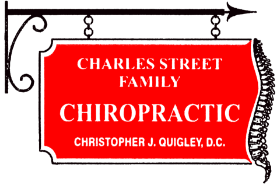Oddly enough, we occasionally get calls from patients telling us they don’t want to come in for their appointments because they are too sick. When we hear this, we know we still have work to do in the realm of patient education.
In the closing days of World War I, a deadly form of influenza (“flu”) appeared. The influenza pandemic of 1917-1918 claimed more lives than the war. During this crisis, doctors of chiropractic noticed that their patients seemed to have a lower fatality rate than the general population. Although this chiropractic observation remains unpublished in the peer-reviewed literature (since no scholarly journals were willing to publish chiropractic data in those days), a study was published by the osteopathic profession.1 Among doctors of osteopathy of the time, it was routine to check patients’ spines for “osteopathic lesions” (what we know as “subluxations”), and to correct them with manipulation. Due to this similarity, the osteopathic publication effectively verifies the chiropractic experience.
The death rate among influenza patients under conventional medical care in the U.S. was estimated at 5 percent to 6 percent. The fatality rate among influenza cases under osteopathic care was estimated at 0.25 percent. The implication drawn from this data by the study’s author was that lesions (subluxations) depress the immune system; therefore, correcting the lesions assists immune function.
This conclusion, drawn by both osteopaths and chiropractors more than 80 years ago, has received support from recent research. The activity of the immune system’s major “players” – the white blood cells – has been found to increase after chiropractic adjustments.2,3 A small, but intriguing study suggests that the immune response of HIV-positive patients (as measured by CD4 count) improves when spinal subluxations are corrected.4,5
In your ordinary, day-to-day experiences, you are not likely to notice that your white blood cells are a bit sluggish. However, this may very well be one effect of spinal subluxation – even in the absence of a sore back or a stiff neck. If you are not already doing so, please consider scheduling monthly chiropractic check-ups, even if you are pain-free. Call my office today at 617-720-1992 to schedule your appointment today.
References
- Riley GW. Osteopathic success in the treatment of influenza and pneumonia. J Am Osteopathic Assn, 1919; 18:565.
- Brennan PC, et al. Immunologic correlates of reduced spinal mobility. Proceedings of the 1991 International Conference on Spinal Manipulation (FCER):118.
- Brennan PC, et al. Enhance phagocytic cell respiratory burst induced by spinal manipulation. J Manipulative Physiol Ther 1991;14:399.
- Selano JL, et al. The effects of specific upper cervical adjustments on the CD4 counts of HIV positive patients. Chiropractic Research J 1994;3:32.
- Todres-Masarsky M, Masarsky CS. The Somatovisceral Interface: Further Evidence. In Masarsky CS, Todres-Masarsky M (editors). Somatovisceral Aspects of Chiropractic: An Evidence-Based Approach, 2001, Churchill Livingstone, New York.
The above article was initialy authored by Charles Masarsky, DC and updated by Christopher Quigley, DC
If you liked this article, please give us a five star review at Google
